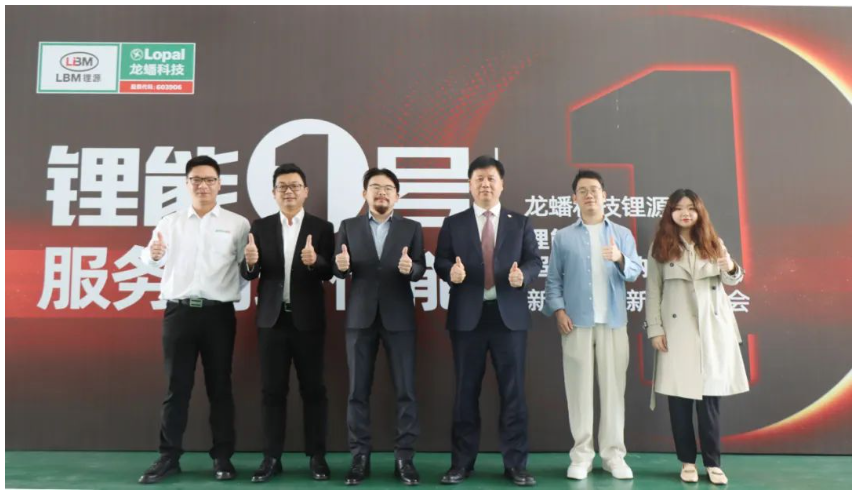Flow batteries to replace rechargeable lithium batteries? There is a graphene away from commercial use
- Categories:Industry News
- Author:
- Origin:
- Time of issue:2022-01-05 17:44
- Views:
(Summary description)A few days ago, a research team at Harvard University in the United States developed a new type of flow battery. The team said the flow battery could be used not only in smartphones but also in new energy applications including renewable energy.
Flow batteries to replace rechargeable lithium batteries? There is a graphene away from commercial use
(Summary description)A few days ago, a research team at Harvard University in the United States developed a new type of flow battery. The team said the flow battery could be used not only in smartphones but also in new energy applications including renewable energy.
- Categories:Industry News
- Author:
- Origin:
- Time of issue:2022-01-05 17:44
- Views:
A few days ago, a research team at Harvard University in the United States developed a new type of flow battery. The team said the flow battery could be used not only in smartphones but also in new energy applications including renewable energy.
In the mobile era, battery technology has become a top priority, and it can even be said that there is no mobile era without batteries. However, problems such as weak battery life exist in the batteries of mobile devices, and the breakthrough of battery technology has always been a top problem, thus restricting the further development of the mobile era. Therefore, researchers have been exploring more efficient power generation energy in order to improve the endurance.
In fact, flow batteries are not a new technology and have been around since the 1960s. Flow batteries do have some advantages over lithium-ion batteries. However, this technology has been in the research and development stage and has not been put into practical application because of its own limitations. Despite the obstacles, the exploration must continue. While using relatively stable new battery technology, human beings are constantly looking for cleaner energy to improve battery technology.
Flow battery characteristics determine advantages, and some aspects are better than lithium-ion batteries
The Harvard team was led by Michael Aziz, professor of materials and energy technology, and Roy Gordon, professor of chemistry and materials science. The new flow battery they studied is based on organic molecules in a neutral pH aqueous solution to generate electricity, and its safety and lifespan are superior to current battery products.
In fact, the field of flow batteries is not a "wasteland". In the 1960s, redox batteries of iron-chromium systems have appeared, which can be regarded as the predecessors of all-vanadium flow batteries. After years of research and development, the technology has come a long way and is expected to be commercialized. Compared with lithium-ion batteries, such flow batteries do have advantages.
First, its scale can be large or small, and its design is flexible.
For energy storage systems, the most important factors are electricity and power. In general, the power that a vanadium redox flow battery can withstand depends on the size of the stack, and the amount of power is proportional to the size of the energy storage tank. No matter what kind of requirements the project puts on the energy storage system, the designer can flexibly make the corresponding design and make adjustments at any time.
Schematic diagram of a flow battery
In contrast, lithium-ion batteries use energy storage materials coated on the surface of the current collector to form electrodes. The process and performance are fixed, and it is difficult to adjust according to specific projects. In comparison, the advantages of flow batteries are obvious.
More importantly, flow batteries are scalable. Regardless of the storage capacity, the structure and control method of the flow battery are almost the same. As long as the energy storage electrolyte is mixed evenly, the SOC (depth of charge and discharge) can be guaranteed to be consistent.
If you want to make a lithium-ion battery of the same size, you need to stack the number of cells, and use a very complex BMS (battery management system) to manage the temperature and SOC of each cell. A little carelessness, overcharging, overdischarging, and overheating will cause the battery to be scrapped or even dangerous, which is also an important reason why smartphone batteries sometimes explode.
Second, the flow battery has a long life.
At present, the life of lithium-ion batteries on the market is about 1000 to 5000 times. Its important energy storage principle is the embedding and de-embedding on solid-state electrodes, which are prone to cracks and end the battery life.
The charging and discharging mechanism of flow batteries is based on the change of valence, rather than the physical changes of ordinary batteries, so the service life is extremely long. Moreover, the all-vanadium flow battery has an ion exchange membrane between the positive and negative electrodes, which prevents the possibility of cross-contamination of the positive and negative electrolytes due to mixing, and has a longer life than other flow batteries.
Third, flow batteries are extremely safe.
As mentioned in the first point, the characteristics of flow batteries make their safety performance guaranteed. There is no fire or explosion hazard, and there will be no safety problems even when encountering large currents.
In addition, the energy efficiency of the flow battery is as high as 75% to 80%, and the start-up speed only takes 0.02s, and the battery components are mostly cheap carbon materials, without the need for precious metals as catalysts.
At present, the companies producing all-vanadium redox flow batteries in the world mainly include UniEnergy Technologies of the United States, Gildemeister of Austria, Sumitomo Electric of Japan, and Dalian Rongke Energy Storage Technology Development Co., Ltd. of my country.
Among them, Rongke Energy Storage Company has achieved a cumulative installed capacity of all-vanadium redox flow batteries of more than 12MW, accounting for 40% of the world's total installed capacity, and also owns the world's first set of 5MW large-scale industrial energy storage devices that are actually connected to the grid. This means that my country's indicators are at the international leading level.
Although flow batteries have so many advantages and have a certain scale of production and application, they have not been put into large-scale commercial and consumer markets at present, because flow batteries themselves have many limitations.
The flow battery has not been commercialized for a long time, and it has many limitations.
As an energy storage system, flow batteries are still in the experimental stage in large-scale energy storage fields such as wind power, and it is even more difficult to achieve commercial use. The new type of flow battery researched by Harvard University above is also in the research and development stage. We can first explore the limitations of the important vanadium-based batteries in the existing flow batteries.
In theory, vanadium compounds could be used as additives to put into existing lithium-ion batteries, similar to how graphene is used. However, when the temperature of pentavalent vanadium ions in the positive liquid of vanadium batteries is higher than 45 degrees, a highly toxic substance called vanadium pentoxide will be precipitated. The precipitation of this substance will block the flow channel, coat the carbon felt fiber, deteriorate the performance of the stack, and eventually cause the battery to be scrapped. What's more, vanadium pentoxide, a highly toxic substance, can have serious consequences.
In addition, all-vanadium flow batteries require extremely high costs. For example, a 5 kW flow battery requires a total of 406,000 main material costs, as well as additional secondary materials and labor costs.
Finally, the energy density of flow batteries is extremely low, only about 40Wh/kg, and these batteries are liquid, so they occupy a large area.
Based on the above limitations, flow batteries are difficult to apply on a large scale, and even more difficult to achieve commercialization. The exploration of flow batteries represents the determination of mankind to continuously search for new energy, but this technology is not mature enough at present. In contrast, graphene battery technology is relatively stable and has been applied in smart devices, and humans are constantly looking for cleaner energy for power generation.
Robust battery technology is commercialized, and there are more possibilities in the future
Among today's emerging battery technologies, graphene battery technology is relatively stable. At the end of last year, Huawei launched the first lithium-ion battery using graphene technology at the 57th Japan Battery Conference. With the help of new high-temperature resistance technology, this battery can increase the upper limit temperature of lithium-ion batteries by 10 degrees, and its service life is twice that of ordinary lithium-ion batteries.
Compared with the new flow batteries still in development, graphene seems to be more reliable. Of course, graphene itself has some limitations, but after all, it has been applied in smart devices. Therefore, as far as the current situation is concerned, graphene will be more used in improving battery technology in the next stage. On the road of battery technology development, it will not work all at once, but a gradual transition through a stable and mature technology should achieve better results.
Of course, this is not to say that the field of battery technology can stand still for the sake of safety. On the contrary, in order to make battery technology no longer a hindrance to the development of the mobile era, it should be bolder to use all possible energy sources to power the progress of battery technology. There are already relevant studies, and progress has also been made.
For example, a scientific research team from the University of Pennsylvania in the United States has developed a new method of generating electricity, which uses the difference in the concentration of carbon dioxide emitted by fossil fuel power plants and carbon dioxide in the air to generate electricity. The device, called the "flow cell," emerged with an average power density of 0.82 watts/square meter, about 200 times higher than the value obtained by previous approximation methods. The research results have been published in the latest issue of the journal Environmental Science and Technology.
Coincidentally, Finnish scientists have also made some progress in researching how to use kinetic energy, thermal energy and solar energy to power equipment. The researchers developed a ferroelectric material called KBNNO that converts heat and pressure into electricity. Researchers at the University of Oulu in Finland have used perovskite crystal structures to extract energy from multiple energy sources and hope to harvest more energy through research.
The manufacturing process for such a device is not complicated, and once the best material is found, it may be possible to commercialize the technology in the next few years. If this vision is realized, we may no longer have to plug our mobile devices into an outlet to charge, but instead draw a steady stream of electricity from natural energy, achieving true energy cleanliness.
Through the above results, it can be optimistically predicted that there will be more new technologies in the battery field in the future, which can improve the utilization rate and endurance of the battery. On the development road of battery technology and any kind of technology, it is necessary to move forward steadily and maturely, but also to be bold and avant-garde innovation. The combination of the two can better promote the further development of the mobile era.
Scan the QR code to read on your phone
Focus on so professional, LBM provides you with a full range of services and support
Search for products or services you want to know

A global strategy focusing on LFP materials.
Contact Information
TEL:025-85392986
Investment hotline:400-676-1858
Address: No. 519, Jiangdong Avenue, Jintan District, Changzhou, Jiangsu
E-mail:chenzhijian@liyuane.cn

Official Account
Copyright © 2021 Changzhou Liyuan New Energy Technology Co., Ltd Powered by www.300.cn 苏ICP备2021033948号-1







 0519-82996699
0519-82996699


